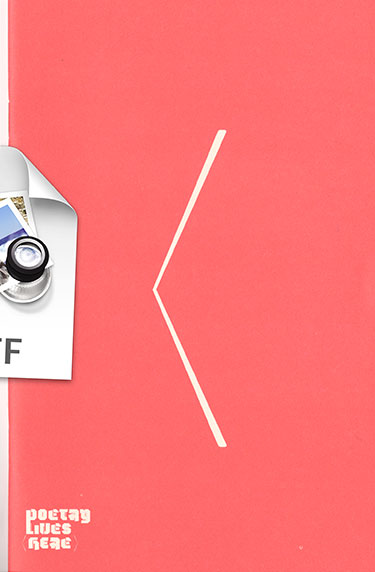 Poetry Lives Here: a special publication from Contemporary Verse 2 (CV2)
Poetry Lives Here: a special publication from Contemporary Verse 2 (CV2)
Eileen Mary Holowka & Joshua Whitehead,CV2, contemporaryverse2.ca/en/store/issue/poetry-lives-here, $7 + shipping/ $5 for pdf copy
CV2 continues to publish verse that is raw, fresh and experimental; they push the boundaries on what readers and critics box into the genre of poetry, and they do it rather well. The supplemental publication that was released to subscribers with the Summer 2015 journal (still available to order) is no exception to their 40-year rule of offering readers electric words. Poetry Lives Here’s mission was to lift the voices of young poets, offering a platform from which to launch their words. Nursed by editors, Eileen Mary Holowka and Joshua Whitehead, the collection is particularly heavy with a solid representation of what youth are capable of doing when critics peek past the regrettable blinders worn when dealing with “young people’s poetry”.
Ingrid Vargas’s “Pressed Flowers//Eighteenth” is absolutely stunning; characters become alive with exacted phrases that are neither shy nor hesitant: “Joe says he doesn’t mind a hairy pussy./”p u s s y”/ he makes it slip off his tongue/so smoothly you’d imagine she is silk/.” This poet drapes adjectives with a youthful certainty that does justice to her theme of uncertain love-touch-tasting; a preoccupation with insects is gritty without being distasteful, perfectly pulling at Kafka while making it her own allusion. Tyson John Atkings’s “Paraglyph II” (un)consciously breaks words into slices and slivers, asking our cognitive selves what the brain puts together even when offered only pieces? The poet begs us to answer the questions of what meaning is lost, what new meaning is made when we chip away the authority of language makers. Barthes would enjoy the entirety of this collection as all of the poets ask something of their readers: we do work, we make much of these poems.
Themes range from internet-human connectivity and dissecting the bodies of lovers to a shooting in Ottawa and literary criticism. With only a few moments of disappointment emanating from overly perfumed word choice and occasionally heavy-handed name dropping, (see Philip Gordon’s “Poem In Which…”), this is a collection to be celebrated and read repeatedly. Poetry Lives Here also deserves recognition for its stellar typesetting and overall design — an aspect too often ignored in poetry anthologies. Melody Morrissette relies on clean-cut and slightly nostalgic design to beckon the reader before the words are left to do the work. It’s an exceptional collection. (Lyndsay Kirkham)
